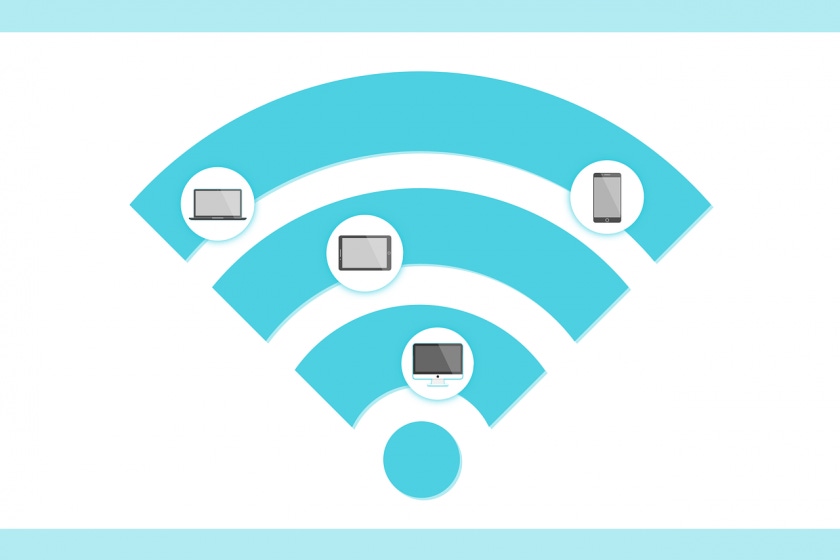AI-Driven Wireless Is Key to the Digital Workplace
The vision of a mobile-first workplace is one where people communicate, interact, and transact in an intuitive and frictionless manner. AI-driven wireless networks are key to making that vision a reality.
January 25, 2019

When I look around the office, I don’t see many people chained to desks. Instead, a cross-functional group is huddled in a conference room, collaborating via our video wall with colleagues logging in from several other locations around the world. A few other folks who usually work from home are tapping away on laptops, tablets, or phones in open-seating areas. In another conference room, team members are presenting to a visiting client.
Like many businesses today, Thoughtworks, the company I work for, is one where the mobile-first workplace is becoming the new normal. That’s due to a host of factors: the proliferation of wireless devices, our flexible remote work policies and emphasis on hiring talent regardless of location, and the unencumbered work styles of younger employees.
We understand that this untethered workforce−with employees coming and going often, and floating around when they are in the office−necessitates new approaches to deploying and managing infrastructure. People must be able to access the applications they need−from any device, wherever they’re working−without sacrificing speed and performance.
That means the urgency has grown for our organization−with 5,000 employees in 40 offices in 14 countries−to provide highly reliable, scalable, and pervasive wireless connectivity.
Wi-Fi is more important than ever as the primary internet access technology, and we simply cannot afford the lower productivity, frustration, and embarrassment that comes with substandard wireless.
These are stringent requirements that our legacy Wireless Local Area Networks (WLAN) could no longer keep up with. We simply have too many mobile users, devices, and applications and too much traffic for these traditional, manually managed approaches to deliver the immediately available, predictably dropout-free performance that our mobile-first workplace demands.
It’s ironic that in contrast to the users they serve, our Wi-Fi administrators were chained to their desks, frantically scanning dashboards to gauge service levels and reactively identify one issue or another−after they arose and were affecting users.
Smarter Wi-Fi
Now we rely on a system driven by artificial intelligence (AI) to automate the operation of our wireless network. AI, combined with the computing power of the cloud, has made it possible to process and analyze huge amounts of data about the network in order to pinpoint problems, understand their impact, and recommend repairs.
The technology we use even offers a Siri-like “virtual network assistant” that uses Natural Language Processing to provide administrators with answers to questions such as “How is the access point in the second-floor conference room doing?”
With teams spread around the globe, videoconferencing is the main mode of interaction inside our company. Employees access a variety of cloud-based business applications via laptops, tablets, and phones. Clients and other guests frequently visit the offices. In short, it’s the kind of fluid environment so typical of today’s workplaces and where almost everything is Wi-Fi-dependent.
Our company decided its old wireless infrastructure−best captured by the image of administrators starting at screens and waiting for systems to fail before reactively fixing them−was no longer up to the task of a growing digital enterprise.
With new AI-powered, cloud-based technology, we have eliminated manual processes in favor of automated ones that detect anomalies, troubleshoot problems, and make Wi-Fi more measurable and predictable. If, for example, it takes longer than two seconds for a user’s iPad to connect, the system is alerted and provides insights on what’s causing the issue.
Before, our IT staff spent 20 hours every couple of months individually hand-changing the passwords on the company’s 90 wireless controllers spread around the world to meet security protocols. Now, that task is automated and takes mere seconds.
We also are looking at another important wireless technology−Bluetooth Low Energy (BLE), which emits unique signals that identify the mobile device’s location−to enhance the mobile experience beyond basic Wi-Fi connectivity. Machine learning in the cloud delivers location estimates with one- to three-meter accuracy and sub-second latency, greatly improving the technology’s usefulness and potential.
We’re excited by BLE’s ability to, say, give a visiting customer turn-by-turn indoor directions to a conference room, or inform employees who are onsite at a given time about the availability of flu shots.
The capability could even be used to monitor employee movement around the office via their devices to intelligently manage lighting and climate control systems to save energy and improve workers’ comfort.
According to Gartner, the vision of the mobile-first workplace is “a set of capabilities that allow the workforce to communicate, interact, and transact in an intuitive and frictionless manner.” We’re all in on the notion that AI-driven wireless networks are key to making that vision a reality.
About the Author
You May Also Like


